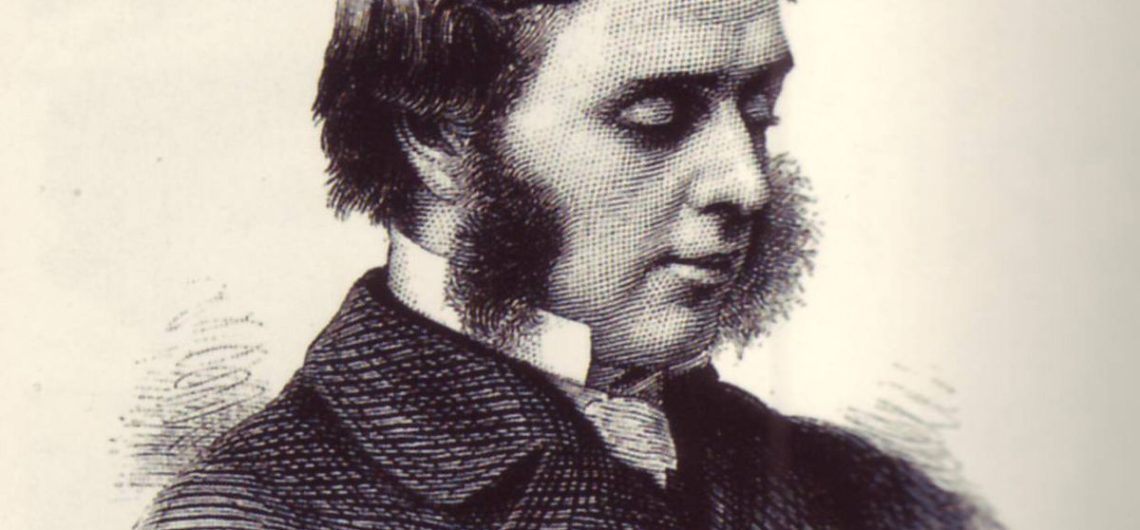The Reverend Charles Hudson served as the Vicar of Skillington for the Anglican Church.
However, his congregation claims that he hiked more mountains than he spoke sermons during his time as a pastor.
At his pulpit, he was only sometimes seen. In most cases, his attention was focused elsewhere.
Hudson was a climber who was considered to be among the most influential during the golden era of alpinism.
Having made the first guideless ascent of Mont Blanc in 1855, the first official ascent of Mont Blanc du Tacul in 1855, a guideless ascent of the Breithorn, and a near ascent of the Aiguille du Goûter solo in winter, as well as being forced back close to the summit by fresh snow, he is considered a pioneer of guideless and winter climbing in the western Alps. He is also considered to be an extremely strong walker.
His guided climbs include the first ascent of Monte Rosa in 1855, the first completed passage of the Monchjoch in 1858, the first ascent of Mont Blanc by the Goûter route (incomplete) in 1859 with E. S. Kennedy and party, and the second ascent of the Aiguille Verte (the first by the Moine ridge) in 1865 (with T. S. Kennedy and Michel Croz). All of these climbs were accomplished with the assistance of his guides.
His death occurred as he was attempting to climb the Matterhorn.
His group encountered a precarious cliff at an altitude of 14,000 feet, yet they were still able to make it to the Swiss summit. After two hours, they made their way from the east face to the north face of the mountain.
Immediately after that, calamity hit.
Both Hadow and Croz, who were climbing together, were involved in a collision that sent them soaring into the air, bringing Hudson and Alfred Douglas along with them.
Howmper and the other two climbers bore the pressure, but the rope broke, sending the four mountaineers plunging to their deaths 4,000 feet below. Whymper was the only climber who survived the fall.
The most influential climber during the golden era of alpinism
He was educated at St. Peter’s School in York. Hudson was a climber who was considered to be among the most influential during the golden era of alpinism. His climbs include the first ascent of Monte Rosa in 1855, the first official ascent of Mont Blanc du Tacul in 1855, the first completed passage of the Monchjoch in 1858, the first ascent of Mont Blanc by the Goûter route (incomplete) in 1859 with E. S. Kennedy and party, and the second ascent of the Aiguille Verte (the first by the Moine ridge) in 1865 (with T. S. Kennedy and Michel Croz). He was an extremely strong walker, and he claimed to have accomplished a number of notable climbs. Having achieved the first guideless ascent of Mont Blanc in 1855 and a guideless ascent of the Breithorn, he is also regarded a pioneer of English guideless climbing in the western Alps. Other notable accomplishments include ascending the Breithorn.
Accident on the Matterhorn
Hudson, who was participating in the first climb of the Matterhorn on July 14, 1865, was tragically died in an infamous catastrophe that occurred during the descent. As Edward Whymper was making preparations to ascend the mountain with Lord Francis Douglas, he became aware that Hudson, together with Michel Croz, had the same purpose in mind. Which Whymper wrote:
While Lord Francis Douglas and I were enjoying our meal at the Monte Rosa hotel, Mr. Hudson and a friend entered the dining area. We had just completed our meal when they arrived. They had just returned from examining the mountain, and a few people in the room who were inactive wanted to know what their goals were. Upon hearing a confirmation of Croz’s assertion, we discovered that Mr. Hudson had the intention of departing the next day at the same time as we did. Following our departure from the chamber for the purpose of consultation, we came to the conclusion that it was not desirable for two separate groups to be present on the same mountain at the same time for the same aim. As a result, Mr. Hudson was extended an invitation to join us, and he willingly accepted our proposition. I took the precaution of questioning Mr. Hudson about his experiences in the Alps before allowing his buddy, Mr. Hadow, to enter the building. As far as I can recall, Mr. Hudson’s response was, “Mr. Hadow has completed the ascent of Mont Blanc in a shorter amount of time than the majority of men.”
The accident occurred as a result of Hadow slipping on the descent not far from the peak, which pulled Croz, Hudson, and Douglas down the north face of the mountain. The rope that was connecting these four individuals to the other three members of the party (Whymper and the two Zermatt guides named Peter Taugwalder, father and son) broke, thereby preventing them from experiencing the same fate. Some people have pointed the finger of responsibility at Hudson for his stubbornness in insisting that the novice Hadow be a member of the party, as well as for his failure to inspect the quality of the rope or the boots that Hadow was wearing.
The corpse of Hudson was recovered from the Matterhorn glacier and laid to rest in the graveyard of Zermatt during the funeral services.
![]()


Comments